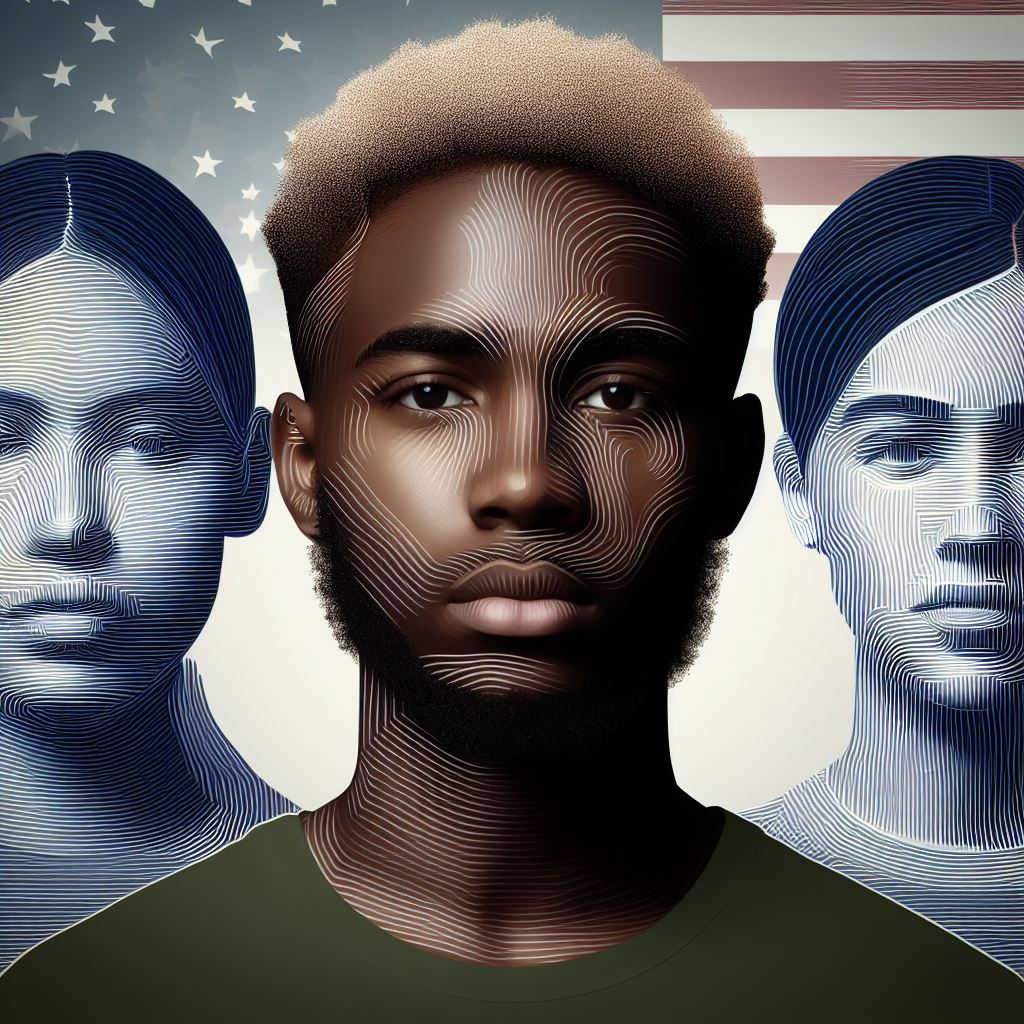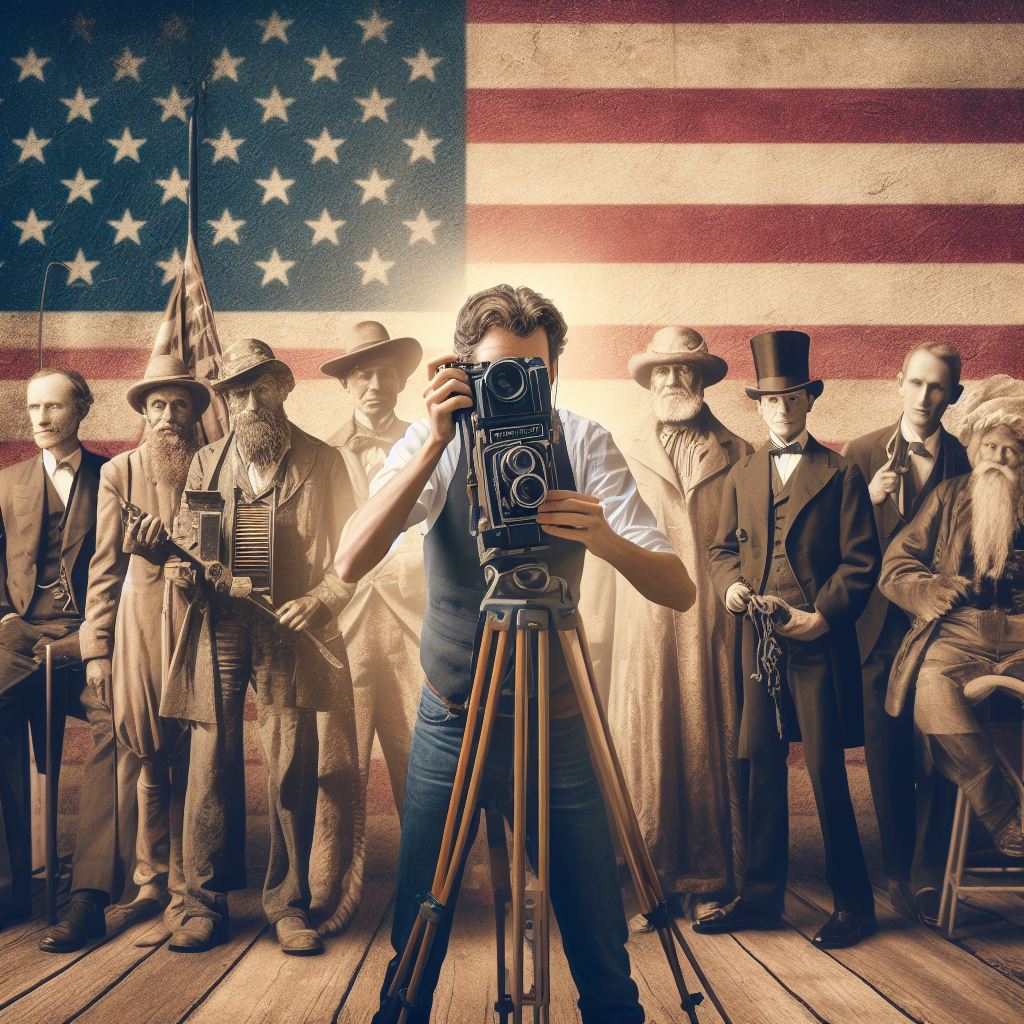Introduction
Let’s explore the POC Voices in the design world in this blog Section.
In the vibrant tapestry of the United States, a transformation is unfolding within the world of design.
A profound shift is taking place, where the voices and perspectives of People of Color (POC) are breaking through longstanding barriers in the design industry.
This section marks the commencement of an extraordinary journey, POC Voices in the Design Worldone that delves deep into the heart of this revolution.
For decades, the design world has been shaped predominantly by a homogenous demographic, with the contributions of POC designers often overlooked or marginalized.
However, in recent years, a remarkable wave of change has been sweeping across the landscape.
This book explores how POC designers are redefining the design narrative, bringing forth fresh insights, creativity, and innovation.
Through their resilience and vision, they challenge the status quo, inspiring transformation and redefining the future of design in the United States.
Join us as we embark on a captivating exploration of Breaking Barriers: POC Voices in the US Design World.
Diversity and representation are crucial in the design industry to promote inclusivity and foster creativity.
This blog section will provide a comprehensive overview of the importance of POC voices in the design world and highlight inspiring individuals who have broken barriers.
Historical context of barriers faced by POC in the design industry
Lack of opportunities and access to education for POC designers
Throughout history, people of color (POC) have faced numerous barriers in the design industry that have limited their opportunities and access to education.
These barriers have hindered the growth and representation of POC voices in the field.
For many years, POC designers faced challenges in accessing quality education and training programs.
Structural inequalities and systemic biases resulted in limited resources and opportunities available to aspiring POC designers.
This created a cycle where POC individuals were unable to pursue design careers, leading to a lack of representation in the industry.
Discrimination and systemic biases in hiring and promotional processes
Discrimination and systemic biases across the design industry have also served as significant barriers for POC designers.
Hiring and promotional processes have historically favored candidates from privileged backgrounds, perpetuating the underrepresentation of POC voices.
POC designers often face unequal treatment, bias, and stereotypes during the hiring process, making it challenging for them to secure employment opportunities.
Additionally, promotional processes tend to overlook the skills and contributions of POC designers, leading to limited career growth within the industry.
Transform Your Career Today
Unlock a personalized career strategy that drives real results. Get tailored advice and a roadmap designed just for you.
Start NowLimited representation of POC perspectives in design trends and aesthetics
Another barrier faced by POC designers is the limited representation of their perspectives in design trends and aesthetics.
Design movements and trends are often influenced by a dominant culture, leaving POC voices underrepresented and their unique cultural perspectives ignored.
This lack of representation not only limits the diversity of design aesthetics but also perpetuates stereotypes and reinforces Western-centric ideals.
POC designers face challenges in shaping the narratives and aesthetics of the design industry, making it difficult for their voices to be heard.
Most Importantly, the historical context of barriers faced by POC in the design industry encompasses the lack of opportunities and access to education, discrimination in hiring and promotion processes, and limited representation in design trends and aesthetics.
These barriers have created a significant gap in the design world, denying POC designers the chance to showcase their talent and perspectives.
To address these issues, it is crucial for the industry to actively promote diversity, equal opportunities, and inclusive design practices, breaking down the barriers that have long hindered POC voices in the field.
Catalysts for change in the US design world
Rise of social movements advocating for diversity and inclusion
- The Black Lives Matter movement, along with other social justice movements, has brought attention to the lack of diversity in the design field.
- These movements demand equal representation and opportunities for people of color (POC) in the design industry.
- Through protests, social media campaigns, and advocacy, these movements have raised awareness about the need for change.
- They have challenged the status quo and pushed design organizations to prioritize diversity and inclusion.
- The power of collective action has forced the design world to confront its biases and embrace change.
Increased recognition of the value of diverse perspectives in design
- Designers are realizing that diverse perspectives lead to more innovative and inclusive solutions.
- Incorporating different cultural experiences and worldviews enriches the design process.
- It allows for a broader range of ideas, pushing boundaries, and challenging the conventional norms.
- Organizations are recognizing the economic benefits of diverse perspectives in design.
- They understand that diverse teams are more capable of understanding and meeting the needs of a diverse audience.
Efforts by organizations to support and mentor POC designers
- Design organizations are actively creating programs and initiatives to support and mentor POC designers.
- They provide resources, scholarships, and mentorship opportunities to help POC designers thrive in the industry.
- These efforts aim to address the historical barriers POC designers have faced in accessing education and opportunities.
- Organizations acknowledge the importance of representation and are actively working towards creating a more inclusive design community.
- By investing in POC designers, organizations are not only diversifying the field but also fostering creativity and innovation.
Essentially, the US design world is undergoing significant changes driven by several catalysts.
The rise of social movements advocating for diversity and inclusion has created the momentum for change.
Recognition of the value of diverse perspectives in design has further pushed the industry to embrace inclusivity.
Additionally, organizations are taking active steps to support and mentor POC designers, addressing historical barriers and fostering an inclusive community.
The collective efforts of these catalysts are breaking barriers and opening doors for POC voices in the US design world.
Read: Impact of Technology: Future Trends in US Animation
Spotlight on influential POC voices in the US design world
Success stories of renowned POC designers breaking barriers
- Iris van Herpen: Dutch fashion designer known for pushing boundaries with her unique, futuristic designs.
- Virgil Abloh: American designer and Off-White founder, becoming the first black artistic director at Louis Vuitton.
- Maya Lin: Chinese-American architect who designed the Vietnam Veterans Memorial, symbolizing healing and remembrance.
- Karim Rashid: Egyptian-born industrial designer recognized for his vibrant and unconventional creations.
- Diane von Furstenberg: Belgian-born American designer who popularized the iconic wrap dress and empowered women in fashion.
Contributions of POC designers to design theory and practice
- Inclusive Design: POC designers have emphasized the importance of creating designs that cater to diverse audiences, ensuring everyone’s needs are considered.
- Cultural Representation: POC designers have introduced cultural elements into their designs, promoting diversity and highlighting underrepresented cultures.
- Sustainability: Many POC designers have been at the forefront of sustainable design practices, advocating for environmentally conscious materials and production methods.
- Social Commentary: POC designers often use their work to address pressing societal issues, sparking conversations and promoting change through design.
- Redefining Beauty Standards: POC designers challenge conventional beauty standards by celebrating unique features and embracing diverse representations within their designs.
Examples of groundbreaking projects by POC designers
- The Smithsonian National Museum of African American History and Culture designed by David Adjaye, a British-Ghanaian architect.
The museum’s striking fa‘ade and thought-provoking exhibits celebrate the rich history and contributions of African Americans. - The High Line in New York City was transformed by the landscape architect, Walter Hood, who incorporated elements of African and African American culture in his design, creating a space that respects its historical context.
- The Nike Air Jordan sneakers, designed by Tinker Hatfield in collaboration with Michael Jordan, revolutionized the athletic shoe industry and became a cultural icon bridging sports and fashion.
- The interior design of the Martin Luther King Jr. Memorial Center was conceived by Roma Design Group. Its timeless aesthetic, inspired by African design traditions, honors the legacy of Dr. King.
- Architect Bjarke Ingels designed the Via 57 West building in New York City, fusing Danish principles of sustainability with influences from Manhattan’s dynamic urban landscape, resulting in an innovative and visually striking residential complex.
Basically, POC designers have made significant contributions to the US design world through their groundbreaking projects, theoretical insights, and success stories.
Their voices have not only challenged industry norms but also brought about positive changes, diversity, and inclusivity.
It is crucial to recognize and celebrate their achievements as they continue to inspire future generations of designers.
Read: Bridging Tradition & Modernity: Design in the American South

Learn More: Color Theory Basics for Furniture Designers
Challenges still faced by POC designers in the industry
Underrepresentation in leadership positions and decision-making roles
- POC designers continue to face a lack of representation in leadership positions within the design industry.
- This underrepresentation limits their influence in decision-making processes, hindering their ability to shape the industry.
- Without diverse perspectives in leadership, the design world misses out on innovative ideas and solutions.
- POC designers often have to work harder to prove their capabilities and overcome stereotypes that question their competence.
- The presence of POC designers in leadership roles would inspire and empower aspiring designers from similar backgrounds.
Persistent stereotypes and biases within the design community
- POC designers continue to encounter stereotypes that undermine their skills, creativity, and professionalism.
- Biases within the design community can lead to unequal treatment, limited opportunities, and unfair evaluations.
- Stereotypes such as assuming POC designers only excel in specific niches limit their access to diverse design projects.
- POC designers have to constantly prove their abilities and challenge preconceived notions to gain recognition.
- The industry must address these biases by promoting awareness, diversity, and equal opportunities for all designers.
Need for sustained efforts to create an inclusive design industry
- Building an inclusive design industry requires long-term commitment and continuous efforts.
- Industry leaders should actively promote diversity, equity, and inclusion in their organizations and projects.
- Regular discussions, workshops, and training sessions can help educate design professionals about unconscious biases.
- Implementing inclusive hiring practices and creating mentorship programs specifically for POC designers can foster growth and opportunities.
- Collaboration with organizations, institutions, and communities can help create a supportive network for POC designers.
- Recognizing the contributions and achievements of POC designers through awards and showcases can encourage representation.
- The design industry needs to actively seek out and amplify POC voices to ensure a more inclusive and equitable future.
In review, POC designers in the US still face numerous challenges within the design industry.
Showcase Your Business Today
Reach thousands of readers actively exploring professional services. Publish your business profile and grow your audience now.
Publish NowThey are underrepresented in leadership positions and decision-making roles, encounter persistent stereotypes and biases, and necessitate sustained efforts to create an inclusive industry.
By addressing these challenges head-on and promoting diversity and inclusion, the design world can unlock the full potential of POC voices and pave the way for a more vibrant and equitable future.
Read: Exploring New York‘s Pioneering Interior Design Scene
Strategies for Amplifying POC Voices in the Design World
Importance of Mentorship and Support Networks for POC Designers
Mentorship and support networks play a vital role in ensuring the success and growth of POC designers in the US design world.
These strategies help break barriers by fostering an inclusive environment where POC voices can be heard and amplified.
- Mentorship programs should be established to connect POC designers with experienced professionals who can provide guidance and support.
Through mentorship, POC designers can gain valuable insights, develop their skills, and navigate the challenges they may face in the industry. - Developing support networks within design organizations and communities is crucial.
These networks can provide a safe space for POC designers to share experiences, exchange ideas, and seek advice.
By creating a strong support system, POC designers feel empowered to overcome obstacles and succeed in their careers. - Encouraging POC designers to become mentors themselves can have a significant impact on amplifying their voices.
By sharing their knowledge and experiences, they can inspire and guide aspiring designers from similar backgrounds.
Advocacy for Diverse Hiring Practices and Representation in Design Organizations
In order to amplify POC voices in the design world, there needs to be a concerted effort to advocate for diverse hiring practices and representation within design organizations.
- Design organizations should actively seek out and hire POC designers.
By diversifying their teams, organizations can bring in fresh perspectives, diverse skill sets, and unique experiences, leading to more inclusive and innovative designs. - Implementation of blind recruitment practices and anonymized evaluations can help reduce biases during the hiring process.
This ensures that POC designers are evaluated purely based on their skills and qualifications, rather than their ethnic backgrounds. - Design organizations should prioritize representation by ensuring that a diverse range of voices is included in decision-making processes.
This includes involving POC designers in leadership positions, design juries, and industry conferences.
Encouraging POC Designers to Take Up Leadership Roles and Speak at Industry Events
Effective amplification of POC voices in the design world can be achieved by encouraging and empowering POC designers to take up leadership roles and speak at industry events.
- POC designers should be given opportunities to lead design teams and projects, allowing them to showcase their expertise and contribute their unique perspectives to the industry.
- Industry events, such as conferences and panel discussions, should actively seek out POC designers as speakers and panelists.
This helps to elevate their voices and provides a platform for them to share their experiences, insights, and ideas with a wider audience. - Providing support and guidance to POC designers in public speaking and leadership skills can help them become more confident and effective communicators, ensuring their voices have a lasting impact.
On a final note, amplifying POC voices in the US design world requires strategic approaches such as mentorship and support networks, advocacy for diverse hiring practices and representation, as well as encouraging POC designers to take up leadership roles and speak at industry events.
By implementing these strategies, the design industry can become more inclusive, diverse, and innovative.
Read: Best Interior Design Magazines and Blogs Based in the US
Conclusion
To recap, we have discussed the importance of POC voices in the US design world.
Now, it’s time for us to take action and support and uplift these voices in the design industry.
Looking ahead, the future of POC representation in the US design world is promising and holds great potential.
By actively engaging with and amplifying POC perspectives, we can break down barriers and create a more inclusive and diverse design community.
Let’s continue to celebrate and uplift these voices by providing equal opportunities, representation, and support.
Together, we can shape a design industry that embraces diverse talent and fosters innovation and creativity.
Join the movement and show your support for POC voices in the US design world!
Remember that diversity and inclusion are not just buzzwords ‘ they are vital for a thriving and forward-thinking design industry.
Let us strive towards a future where every designer, regardless of their background, can contribute, succeed, and be recognized for their unique perspectives and talents.
Together, we can break barriers and create a design world that truly represents and serves all.
[E-Books for Sale]
The Big Book of 500 High-Paying Jobs in America: Unlock Your Earning Potential
$19.99 • 500 High-Paying Jobs • 330 pages
Explore 500 high-paying jobs in America and learn how to boost your career, earn more, and achieve success!
See All 500 High-Paying Jobs of this E-Book
1001 Professions Without a Degree: High-Paying American Jobs You Can Start Now
$19.99 • 1001 Professions Without a Degree • 174 pages
Discover 1001 high-paying jobs without a degree! Unlock career tips, skills, and success strategies for just $19.99!




